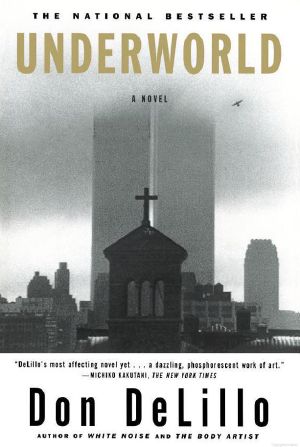Underworld

- Authors
- Don Delillo
- Publisher
- Picador
- Tags
- fiction
- ISBN
- 9780684848150
- Date
- 1996-12-31T05:00:00+00:00
- Size
- 0.70 MB
- Lang
- eng
### Amazon.com Review
While Eisenstein documented the forces of totalitarianism and Stalinism upon the faces of the Russian peoples, DeLillo offers a stunning, at times overwhelming, document of the twin forces of the cold war and American culture, compelling that "swerve from evenness" in which he finds events and people both wondrous and horrifying. _Underworld_ opens with a breathlessly graceful prologue set during the final game of the Giants-Dodgers pennant race in 1951. Written in what DeLillo calls "super-omniscience" the sentences sweep from young Cotter Martin as he jumps the gate to the press box, soars over the radio waves, runs out to the diamond, slides in on a fast ball, pops into the stands where J. Edgar Hoover is sitting with a drunken Jackie Gleason and a splenetic Frank Sinatra, and learns of the Soviet Union's second detonation of a nuclear bomb. It's an absolutely thrilling literary moment. When Bobby Thomson hits Branca's pitch into the outstretched hand of Cotter--the "shot heard around the world"--and Jackie Gleason pukes on Sinatra's shoes, the events of the next few decades are set in motion, all threaded together by the baseball as it passes from hand to hand.
"It's all falling indelibly into the past," writes DeLillo, a past that he carefully recalls and reconstructs with acute grace. Jump from Giants Stadium to the Nevada desert in 1992, where Nick Shay, who now owns the baseball, reunites with the artist Kara Sax. They had been brief and unlikely lovers 40 years before, and it is largely through the events, spinoffs, and coincidental encounters of their pasts that DeLillo filters the Cold War experience. He believes that "global events may alter how we live in the smallest ways," and as the book steps back in time to 1951, over the following 800-odd pages, we see just how those events alter lives. This reverse narrative allows the author to strip away the detritus of history and pop culture until we get to the story's pure elements: the bomb, the baseball, and the Bronx. In an epilogue as breathless and stunning as the prologue, DeLillo fast-forwards to a near future in which ruthless capitalism, the Internet, and a new, hushed faith have replaced the Cold War's blend of dread and euphoria.
Through fragments and interlaced stories--including those of highway killers, artists, celebrities, conspiracists, gangsters, nuns, and sundry others--DeLillo creates a fragile web of connected experience, a communal Zeitgeist that encompasses the messy whole of five decades of American life, wonderfully distilled.
### From Library Journal
Dennis Boutsakaris reads skillfully from DeLillo's carefully abridged opus (LJ 9/1/97), which begins with an extended prolog describing a memorable 1951 World Series game. The baseball hit in the game's climactic home run becomes a focal point for the sprawling novel. The ball's various owners are meticulously profiled as 40 years of American history and culture are sketched. The resulting panorama of the modern age is reminiscent of E.L. Doctorow's splendid Ragtime, yet ultimately the audio fails to move or engage the listener. DeLillo's powers of description are acute, and the intricate structure he has devised for his story is a marvel, but these overpowering virtues seem wearyingly mechanical. The lengthy parade of characters is collectively forgettable. The underlying theme of garbage provides an air of quiet desperation to the grim litany of current events and interwoven plot lines. Not recommended.?John Owen, Advanced Micro Devices Lib., Santa Clara, Cal. Copyright 1997 Reed Business Information, Inc.